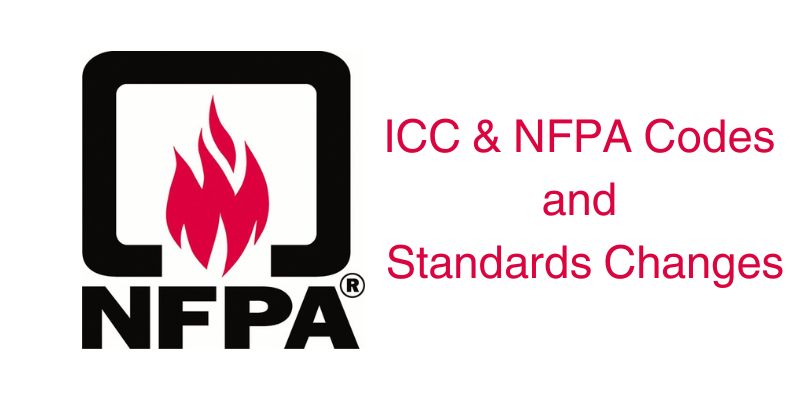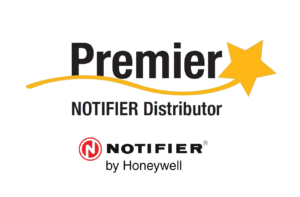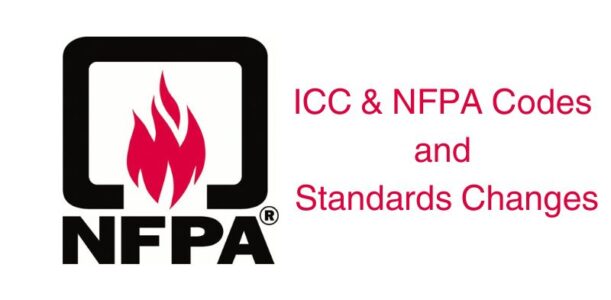Commercial buildings must adhere to the regulations and codes established by the International Fire Code Building Code (ICC) to ensure the safety of all building occupants and employees. In 2021, there were key changes to the ICC codes and National Fire Protection Association (NFPA) codes that regulate the emergency responder equipment. It is imperative that all company and building owners are aware of these changes and ensure implementation into their commercial fire alarm systems.
Get A Quote

International Fire Code (IFC)
Effective communication between emergency responders is critical to prevent loss of life and protect property during every kind of emergency. Since 2009, the IFC has regulated the radio coverage that emergency responders within commercial buildings can use.
The International Fire Code released a series of new definitions for Emergency Responder Radio coverage that clearly define the language used regarding which frequencies must be used and the intended coverage area. The initial changes added five new definitions to the IFC’s 2021 definition.
Emergency Responder Radio Coverage – Section 202 Definitions
2021 IFC RF Radio Frequency (RF): This is a measure that represents the oscillation rate of electromagnetic waves, or electromagnetic radiation spectrum, as specified by the fire code official for Public Safety frequency.
2021 IFC Critical Areas: Areas of the building that are specifically designated for emergency responder radio coverage include elevator lobbies, exit passageways, fire command centers, exit stairs, control valve location and fire protection equipment rooms, and any other area the fire code official deems to be critical.
Code changes will require a 99% signal strength in all critical areas of a commercial building.
Active RF Emitting Device: Active emitting devices are clearly defined as any kind of circuit component requiring an AC or DC power source that can electrically control electron flow and/or amplify the RF signal. This includes but is not limited to, Bi-directional amplifiers, signal boosters, Fiber Distributed Antenna Systems, and repeaters.
Passive RF Emitting Device: A term not included in the code, a Passive RF Emitting Device is the opposite of an Active RF Emitting Device and does not require an external AC or DC power source for operation nor provide RF signal amplification such as couplers, splitters, coax, and passive antennas.
Delivered Audio Quality (DAQ): DAQ 3 is generally used to explain the minimum signal strength going in and out of a commercial building. The revised definition in the 2021 code will help explain the difference between the DAQ levels, including DAQ 3.
DAQ, which measures the quality of audio via a transmission medium, is frequently used to assess and gauge the audio quality received by radio communication systems. DAQ levels are outlined with the subsequent scale:
- DAQ 1 – Completely unusable where speech is not understandable, but present.
- DAQ 2 – The speech requires constant repartition to be understood because of distortion or noise.
- DAQ 3 – The speech is understandable, but it requires some effort and some occasional repetition because of distortion or noise.
- DAQ 4 – While some distortion or noise may be present, speech is understandable without the need for repetition.
- DAQ 5 – Speech is perfect, with no noise or distortion present.
Part ll will discuss the revised terminology and 2021 code changes for NFPA 101, Life Safety Code, and NFPA 1, Fire Code.
High Rise Security Systems offers all Notifier® components needed for code-compliant Emergency Responder Communication Enhancement Systems, ERCES, including Notifier® BDA, Distributed Antenna Systems, connectors, lighting solutions, coaxial cables, and donor antennas. Notifier® by Honeywell BDAs offers dependable two-way radio communication and FirstNet™ signal coverage in a variety of structures, including tunnels and interior buildings, and are engineered to satisfy all public safety frequency band ranges.
HRSS offers high-quality, UL-listed commercial fire alarm system equipment and knowledgeable fire and life safety system design with complete code compliance. Contact us to learn more about how to ensure your commercial property is up to code with ICC and NFPA regulations.



